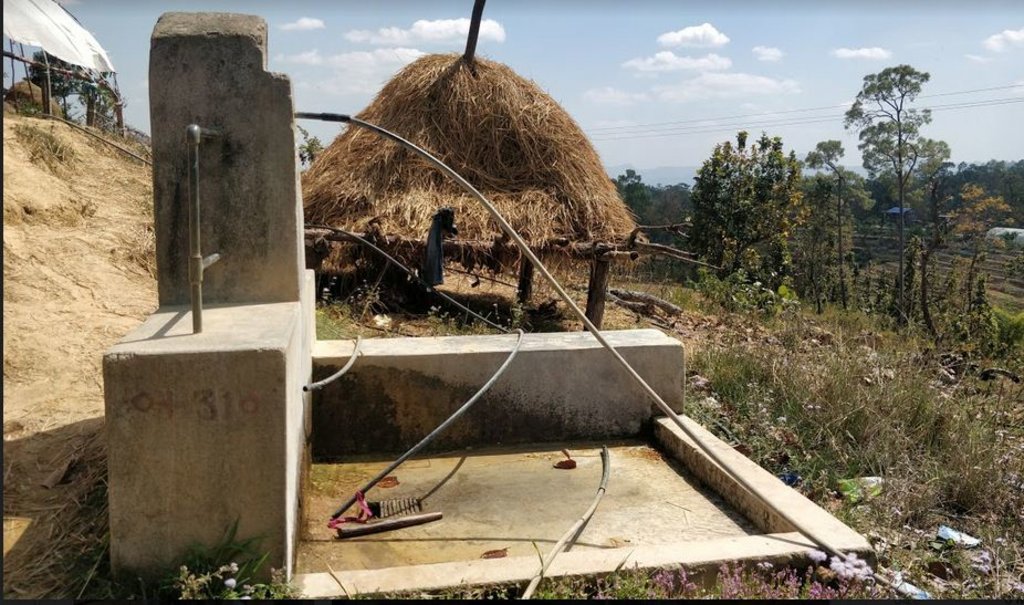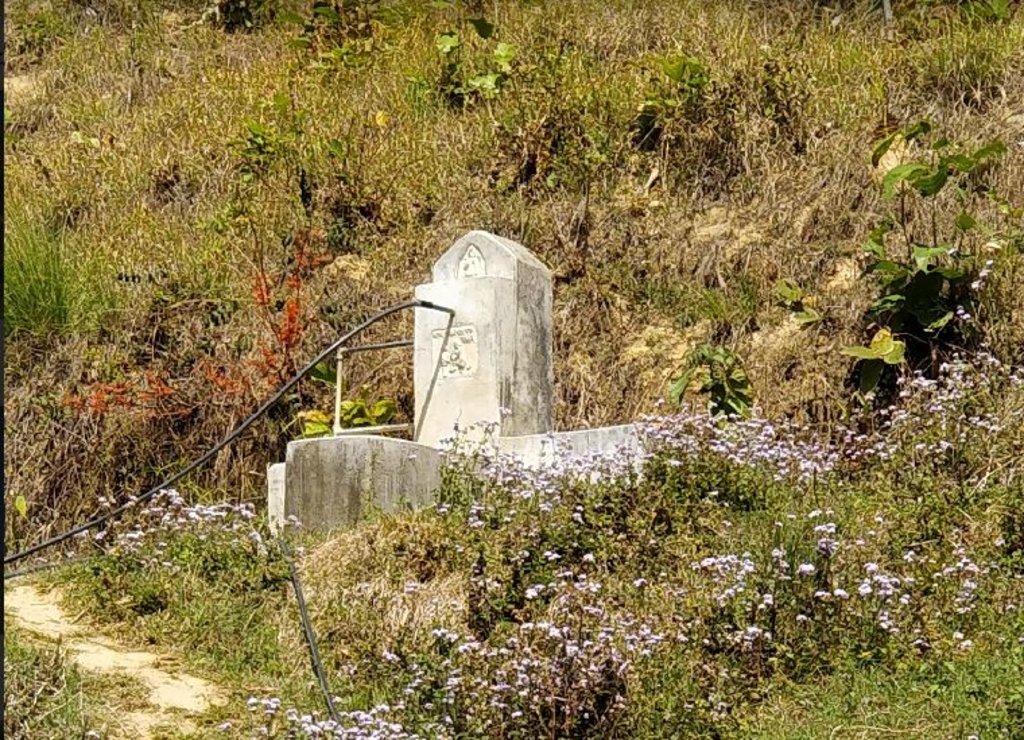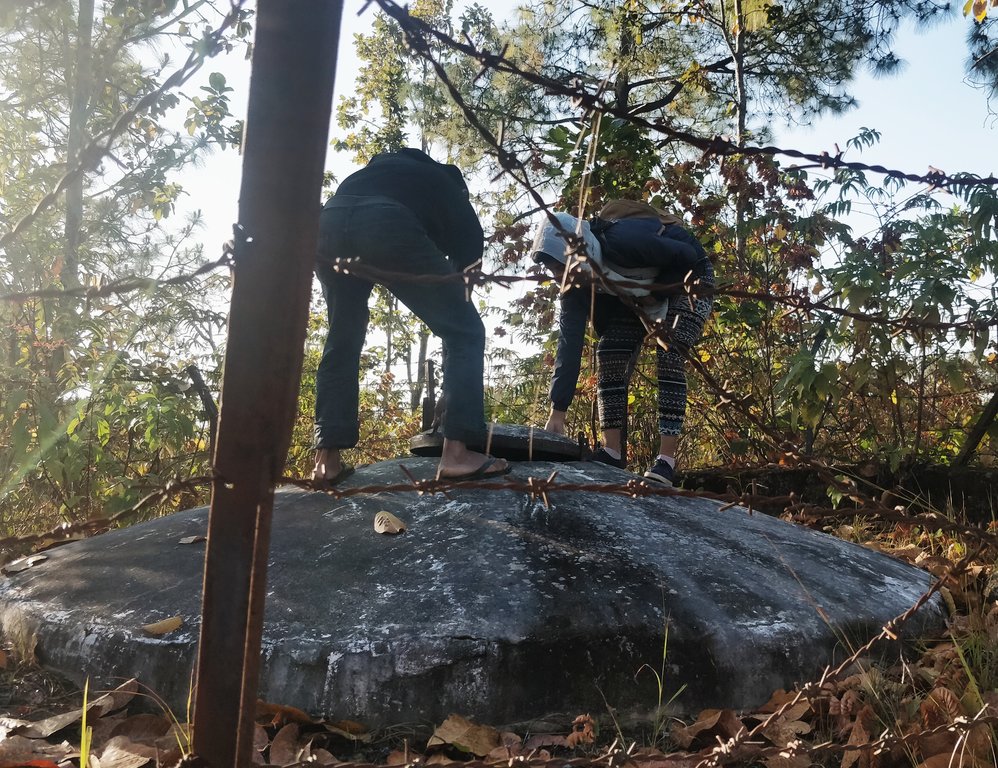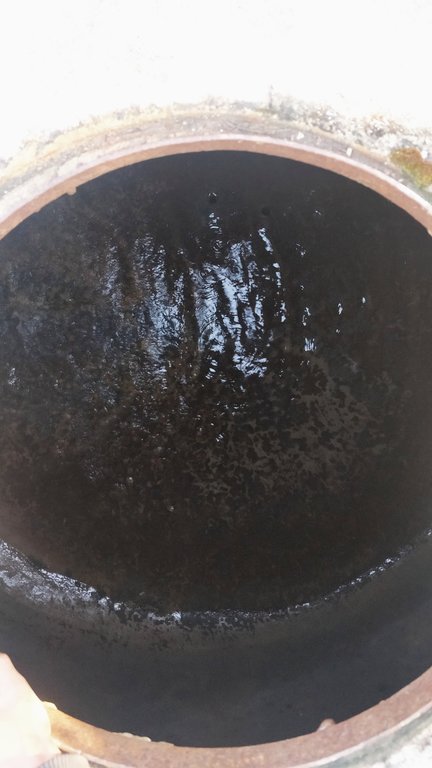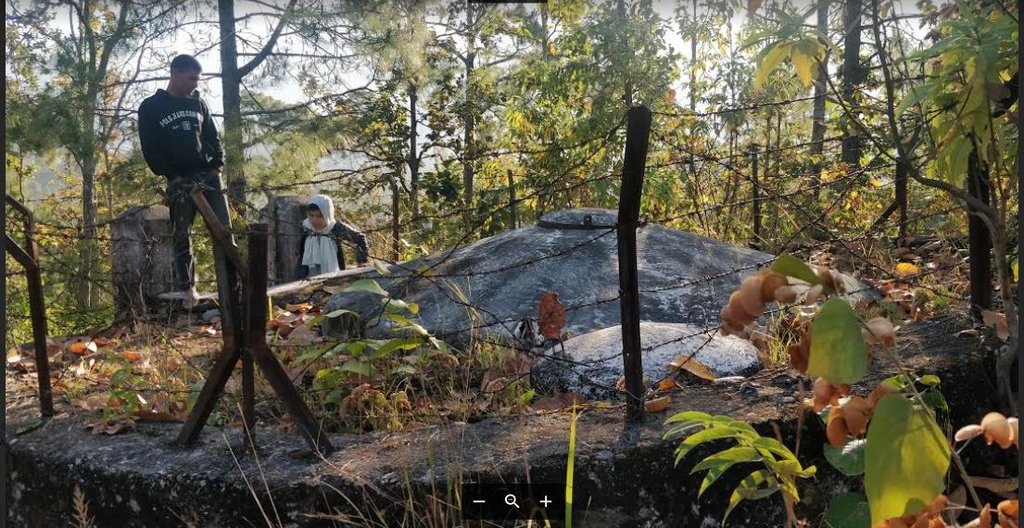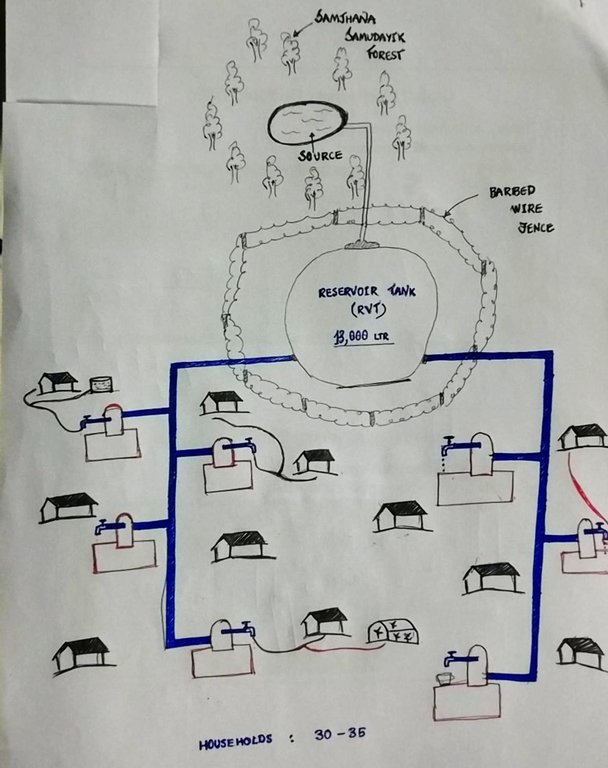Odaltaal-10 Single Use Water System [尼泊尔]
- 创建:
- 更新:
- 编制者: Jhuna Kattel
- 编辑者: –
- 审查者: Renate Fleiner
Tanki
technologies_5185 - 尼泊尔
查看章节
全部展开 全部收起1. 一般信息
1.2 参与该技术评估和文件编制的资源人员和机构的联系方式
关键资源人
Water user:
Salami Kham Bahadur
N/A
尼泊尔
有助于对技术进行记录/评估的项目名称(如相关)
Prospects and challenges of water use systems as climate adaptive option for sustainable water management in Himalayan Region有助于对技术进行记录/评估的机构名称(如相关)
Kathmandu University (KU) - 尼泊尔1.3 关于使用通过WOCAT记录的数据的条件
编制者和关键资源人员接受有关使用通过WOCAT记录数据的条件。:
是
1.4 所述技术的可持续性声明
这里所描述的技术在土地退化方面是否存在问题,导致无法被认为是一种可持续的土地管理技术?:
否
注释:
This is a Single Use Water System implemented in order to preserve the water sources through their sustainable use.
2. SLM技术的说明
2.1 技术简介
技术定义:
Water from source is collected in a reservoir tank ( RVT) of volume 13000 Ltr and then distributed to each household for Single Use. Traditionally, the system was constructed to serve a single purpose-drinking (hence the name "Single Use" water system). However, due to increasing demand and need to meet multiple uses, the water users are using the same water for different purposes like drinking, irrigation and other domestic uses.
2.2 技术的详细说明
说明:
A Single Use Water System (SUWS) is the one in which the supplied water serves a single purpose. Traditionally, the system was constructed in order to meet the growing demand and serve a single purpose i.e. supply drinking water to households ( hence the name "Single Use" water systems). However, people's demands and needs increased and supplied water was then used for various purposes like for irrigation, animal husbandry, domestic chores like bathing, washing, etc.
The technology is applied in a natural environment (community forest). The source of water is a natural source that lies in a community forest and hence, the availability is seasonal. The land where the source falls is owned by the government and the implementation of the technology was primarily assisted by the Village Development Committee (VDC). Its use rights falls under the water users. The main elements include a concrete Reservoir tank (RVT), pipeline and tap system or tap towers with faucets. The major functions of this technology are to store water and distribute to the 30-35 households and to ensure the preservation of natural water source through its sustainable use. Major activities are labor and construction activities for building the reservoir tank and laying down the pipeline. Maintenance work, if and when it is needed, is carried out with the help of the water users. No specific group or committee has been formed that looks onto the matters of discussion of the committee. No investment has been made by the local water users' group towards the construction of the technology. Benefits of the technology are the availability of clean drinking water at household level and the preservation of the natural source of water that ensures its perennial availability. Water users admire the overall improvement of their health status through the availability of clean drinking water.
They dislike the fact of water scarcity during dry seasons and the poor management of the system. The quantity of the water is adequate for most of the year. However, scarcity of water during the dry months (when the source dries out) is still eminent. Quality of water is good with low salinity and or iron and other elements but persistence of lime in the water remains.
2.3 技术照片
2.5 已应用该技术的、本评估所涵盖的国家/地区/地点
国家:
尼泊尔
区域/州/省:
Province 6, Karnali, Mid - Western Development Region
有关地点的进一步说明:
Kunathari VDC -10, Odaltaal
具体说明该技术的分布:
- 均匀地分布在一个区域
如果不知道精确的区域,请注明大致覆盖的区域:
- 1-10 平方千米
技术现场是否位于永久保护区?:
是
如果是,请具体说明:
Community Forest ( Samjhana Samudayik Ban)
Map
×2.6 实施日期
如果不知道确切的年份,请说明大概的日期:
- 10-50年前
2.7 技术介绍
详细说明该技术是如何引入的:
- 作为传统系统的一部分(> 50 年)
注释(项目类型等):
It is based on a traditional system, but improvised to construct a reservoir tank (RVT) and water supplied through a pipeline. The traditional system contained a reservoir pond dug up and water was supplied through feeding rubber and plastic pipes to the households with no faucets. This caused the water to flow through the pipes without stopping and there was loss of precious water due to excess drainage. The dug up pond caused sediments, dirt, insects and leaves to collect in the water, clogging the pipes and making water unsafe for drinking.
The construction of concrete RVT with lid ensured water stayed free from sediments and falling leaves. Construction of tap towers with taps and faucets ensured water was not wasted. The use of Poly-Vinyl Chloride (PVC) pipe with pipeline system was done to the traditional system of supply of water to households.
3. SLM技术的分类
3.1 该技术的主要目的
- 适应气候变化/极端天气及其影响
- drinking water purpose ( to improve water security at a household level)
3.2 应用该技术的当前土地利用类型

森林/林地
- (半天然)天然森林/林地
(半天然)天然森林/林地:具体说明管理类型:
- 选伐
以上的树木是落叶树还是常绿树?:
- 常绿
产品和服务:
- 自然保持/保护
注释:
Samjhana Samudayik Ban ( Community Forest)
3.4 供水
其它(比如洪水后):
- Natural Water Source
注释:
Natural Spring water source inside Community Forest
3.5 该技术所属的SLM组
- 集水
- 地下水管理
- water management ( for Drinking purpose) - Gravity Fed Single Line
3.6 包含该技术的可持续土地管理措施

结构措施
- S5:大坝、集水斗、水池
- S6:墙、障碍物、栅栏、围墙
- S7:集水/供水/灌溉设备
- S11:其它
3.7 该技术强调的主要土地退化类型

水质恶化
- Hs:地表水良变化
- Hp:地表水水质下降
3.8 防止、减少或恢复土地退化
具体数量名该技术与土地退化有关的目标:
- 不适用
注释:
The "intended" sole purpose of the technology was to serve a single purpose- to supply drinking water at a household level. Hence, no significant effect with regard to land degradation was intended to have been achieved; hence omitted.
4. 技术规范、实施活动、投入和成本
4.1 该技术的技术图纸
技术规范(与技术图纸相关):
Reservoir Tank (13,000 LTR in volume). Both the source and the RVT are located inside community forest ( Samjhana Samudayik Ban). The water then flows due to the effects of gravity onto the tap towers, wherein water is supplied for 30-35 households for Single Use. Even though single use (drinking) was considered in the construction of technology, people have been fulfilling various needs with the water supplied ( eg. Drinking, irrigation, and other domestic uses).
4.2 有关投入和成本计算的一般信息
具体说明成本和投入是如何计算的:
- 每个技术区域
注明尺寸和面积单位:
10 Dhurs
如果使用本地面积单位,注明转换系数为1公顷(例如1公顷=2.47英亩):1公顷=:
1 ha= 590.70 dhurs
其它/国家货币(具体说明):
NPR
如相关,注明美元与当地货币的汇率(例如1美元=79.9巴西雷亚尔):1美元=:
113.0
注明雇用劳工的每日平均工资成本:
N/A
4.3 技术建立活动
| 活动 | 时间(季度) | |
|---|---|---|
| 1. | Construction of Reservoir Tank | |
| 2. | Laying down the pipeline |
注释:
The SUWS system was contributed by the VDC but exact costs couldn't be recollected by the locals. Similarly, the locals vaguely remember the season of construction. As per some of the water users, the construction was started during summer, but could only be completed after winter season was over due to rains disturbing the work in between.
4.4 技术建立所需要的费用和投入
| 对投入进行具体说明 | 单位 | 数量 | 单位成本 | 每项投入的总成本 | 土地使用者承担的成本% | |
|---|---|---|---|---|---|---|
| 劳动力 | Voluntary | |||||
| 设备 | Construction of RVT | |||||
| 设备 | Laying down pipeline |
如果您无法分解上表中的成本,请估算建立该技术所需要的总成本。:
1400.0
如果土地使用者负担的费用少于100%,请注明由谁负担其余费用:
Village Development Committee contributed 100% of costs, pipeline contributed by a NGO ( RRN), DFID helped with other miscellaneous costs and Newasanstha helping with other running costs.
注释:
Since exact estimation and/or recollection of the costs of construction of the technology was not possible; an estimation was made based upon the then prices of materials, pipes and labor costs- which estimated to be roughly 70 USD.
It has to be kept in mind that the 70 USD that was used was almost 50 years ago. Keeping in line with the inflation rates, it could be worth more than 15-20 times of the original cost ( >1400 USD).
Hence, to make it easier to compare with the construction VS maintenance costs, the figures have been rounded off to today's value as 1400 USD.
4.5 维护/经常性活动
| 活动 | 时间/频率 | |
|---|---|---|
| 1. | Laying down pipeline ( by RRN) | Once (2056 B.S,) during winter |
| 2. | Operation and maintenance costs (borne by a NGO- DFID) | Once (2071 B.S.) during summer |
| 3. | Changing of pipes ( borne by NGO- Newasanstha and the locals) | 6-7 times ( during summer, winter and during rains) |
注释:
The running and maintenance costs borne by various non-governmental organizations and the local community as and when required.
4.6 维护/经常性活动所需要的费用和投入(每年)
| 对投入进行具体说明 | 单位 | 数量 | 单位成本 | 每项投入的总成本 | 土地使用者承担的成本% | |
|---|---|---|---|---|---|---|
| 劳动力 | Voluntary Labour contribution by locals | 100.0 | ||||
| 设备 | Changing of PVC Pipes | 25.0 |
如果您无法分解上表中的成本,请估算维护该技术所需要的总成本。:
700.0
如果土地使用者负担的费用少于100%,请注明由谁负担其余费用:
Non-Governmental organizations like DFID, NewaSanstha and Village Development Committee contributed from time to time
注释:
The exact costs couldn't be calculated. But as per the locals, the costs of changing the PVC pipes 6 times came to around 700 USD.
4.7 影响成本的最重要因素
描述影响成本的最决定性因素:
The construction materials, pipelines were the ones which costed the most.
5. 自然和人文环境
5.1 气候
年降雨量
- < 250毫米
- 251-500毫米
- 501-750毫米
- 751-1,000毫米
- 1,001-1,500毫米
- 1,501-2,000毫米
- 2,001-3,000毫米
- 3,001-4,000毫米
- > 4,000毫米
有关降雨的规范/注释:
Total annual rainfall of the region was around 1609 mm; however no literature could give an idea on the annual "average" rainfall. Thus, estimated rainfall was mentioned.
注明所考虑的参考气象站名称:
Meteorological Forecasting Division, Nepal ( www.mfd.gov.np)
农业气候带
- 半湿润
The climate is overall humid with monsoon consisting of 2-3 months ( June - August) and dry and arid conditions during the winter seasons.
5.2 地形
平均坡度:
- 水平(0-2%)
- 缓降(3-5%)
- 平缓(6-10%)
- 滚坡(11-15%)
- 崎岖(16-30%)
- 陡峭(31-60%)
- 非常陡峭(>60%)
地形:
- 高原/平原
- 山脊
- 山坡
- 山地斜坡
- 麓坡
- 谷底
垂直分布带:
- 0-100 m a.s.l.
- 101-500 m a.s.l.
- 501-1,000 m a.s.l.
- 1,001-1,500 m a.s.l.
- 1,501-2,000 m a.s.l.
- 2,001-2,500 m a.s.l.
- 2,501-3,000 m a.s.l.
- 3,001-4,000 m a.s.l.
- > 4,000 m a.s.l.
5.3 土壤
平均土层深度:
- 非常浅(0-20厘米)
- 浅(21-50厘米)
- 中等深度(51-80厘米)
- 深(81-120厘米)
- 非常深(> 120厘米)
土壤质地(表土):
- 细粒/重质(粘土)
土壤质地(地表以下> 20厘米):
- 细粒/重质(粘土)
表土有机质:
- 中(1-3%)
5.4 水资源可用性和质量
地下水位表:
< 5米
地表水的可用性:
中等
水质(未处理):
良好饮用水
水质请参考::
地下水和地表水
水的盐度有问题吗?:
否
该区域正在发生洪水吗?:
否
5.5 生物多样性
物种多样性:
- 高
栖息地多样性:
- 低
5.6 应用该技术的土地使用者的特征
定栖或游牧:
- 半游牧的
生产系统的市场定位:
- 生计(自给)
非农收入:
- 收入的10-50%
相对财富水平:
- 贫瘠
个人或集体:
- 团体/社区
机械化水平:
- 手工作业
性别:
- 女人
- 男人
土地使用者的年龄:
- 儿童
- 青年人
- 中年人
- 老年人
说明土地使用者的其他有关特征:
Most of the community are literate ( finished upto classes 4/5 ) . The ratio of male: female is almost equal. Most of the users are middle-aged ( 40-50 yrs age-group) . The ethnicity consists of Thakuri, Dalits and Janajatis. Total land holding of the water users is around 20 ropanis. ( 1 hectare = 19.65 ropanis)
5.7 应用该技术的土地使用者使用的平均土地面积
- < 0.5 公顷
- 0.5-1 公顷
- 1-2 公顷
- 2-5公顷
- 5-15公顷
- 15-50公顷
- 50-100公顷
- 100-500公顷
- 500-1,000公顷
- 1,000-10,000公顷
- > 10,000公顷
这被认为是小规模、中规模还是大规模的(参照当地实际情况)?:
- 小规模的
注释:
around 10 Dhurs of land is occupied by the technology. (1 hectare = 590.70 dhurs)
5.8 土地所有权、土地使用权和水使用权
土地所有权:
- 州
土地使用权:
- 社区(有组织)
用水权:
- 社区(有组织)
土地使用权是否基于传统的法律制度?:
否
注释:
The water source is owned by the state / government. The access to water is open ; however during the time of crisis, its use is limited to each household.
5.9 进入服务和基础设施的通道
健康:
- 贫瘠
- 适度的
- 好
教育:
- 贫瘠
- 适度的
- 好
技术援助:
- 贫瘠
- 适度的
- 好
就业(例如非农):
- 贫瘠
- 适度的
- 好
市场:
- 贫瘠
- 适度的
- 好
能源:
- 贫瘠
- 适度的
- 好
道路和交通:
- 贫瘠
- 适度的
- 好
饮用水和卫生设施:
- 贫瘠
- 适度的
- 好
金融服务:
- 贫瘠
- 适度的
- 好
注释:
The access to all these services is limited as the locals have to traverse a distance of almost 30 minutes to bazaar area / marketplace. The road infrastructure is good.
6. 影响和结论性说明
6.1 该技术的现场影响
社会经济效应
生产
作物生产
饲料生产
森林/林地质量
生产故障风险
产品多样性
生产区域
水资源可用性和质量
饮用水的可用性
饮用水的质量
家畜用水的可用性
家畜用水的质量
灌溉用水的可用性
灌溉用水的质量
灌溉用水需求
收入和成本
收入来源的多样性
社会文化影响
健康状况
注释/具体说明:
Prior to the adoption of the technology, typhoid, jaundice, diarrhea and dysentery used to be a problem during the summer and rainy seasons. However, after the adoption of technology, the number of cases of such illnesses have drastically decreased and overall health status of the people greatly improved due to availability of clean drinking water.
生态影响
减少气候和灾害风险
干旱影响
对现场影响的评估(测量)进行具体说明:
The "intended" sole purpose of the technology was to serve a single purpose- to supply drinking water at a household level. Hence, no significant effect with regard to other ecological impacts have been achieved; hence omitted.
6.2 该技术的场外影响已经显现
水资源可用性
注释/具体说明:
Water can be made available to distant places with the connection of a PVC pipe to the faucet in SUWS tap towers. Thus, more people are being benefitted from the technology.
6.3 技术对渐变气候以及与气候相关的极端情况/灾害的暴露和敏感性(土地使用者认为的极端情况/灾害)
渐变气候
渐变气候
| 季节 | 增加或减少 | 该技术是如何应对的? | |
|---|---|---|---|
| 年温度 | 增加 | 不好 | |
| 年降雨量 | 减少 | 不好 |
气候有关的极端情况(灾害)
气候灾害
| 该技术是如何应对的? | |
|---|---|
| 干旱 | 适度 |
6.4 成本效益分析
技术收益与技术建立成本相比如何(从土地使用者的角度看)?
短期回报:
稍微积极
长期回报:
稍微积极
技术收益与技术维护成本/经常性成本相比如何(从土地使用者的角度看)?
短期回报:
稍微积极
长期回报:
稍微积极
注释:
Estimated maintenance and running costs could not be exactly calculated, but weighing down the pros with the costs; the benefits outweigh the costs.
6.6 适应
最近是否对该技术进行了修改以适应不断变化的条件?:
否
6.7 该技术的优点/长处/机会
| 土地使用者眼中的长处/优势/机会 |
|---|
| Availability of clean source of drinking water is ensured. |
| Need to travel long distances to fetch water not prevalent due the the availability of taps with drinking water at household levels. |
| Water being used for various purposes like drinking, irrigation, domestic purposes, etc. |
| 编制者或其他关键资源人员认为的长处/优势/机会 |
|---|
| Water scarcity during arid and dry winters decreased if not stopped overall. |
6.8 技术的弱点/缺点/风险及其克服方法
| 土地使用者认为的弱点/缺点/风险 | 如何克服它们? |
|---|---|
| Water not available all year-round | By construction of another reservoir tank (RVT) |
| 编制者或其他关键资源人员认为的弱点/缺点/风险 | 如何克服它们? |
|---|---|
| Pipeline severely damaged due to lime | Lime treatment and changing of pipes to more resistant ones ( GI ) pipes instead of feeble PVC ones used |
| No specific committee / group set up to discuss the problems | Setting up water users' committee and donating a small sum per household every month that goes onto a fund, that can be later used to address various problems that may arise in the future. |
| Water being supplied for a single use only | upgrading the technology to Multiple Use Water Systems (MUWS) in place of Single-Use Water Systems (SUWS) could address the multiple uses of water users. |
7. 参考和链接
7.1 信息的方法/来源
- 实地考察、实地调查
> 10
- 与土地使用者的访谈
> 1
(现场)数据是什么时候汇编的?:
15/06/2019
链接和模块
全部展开 全部收起链接
无链接
模块
无模块




